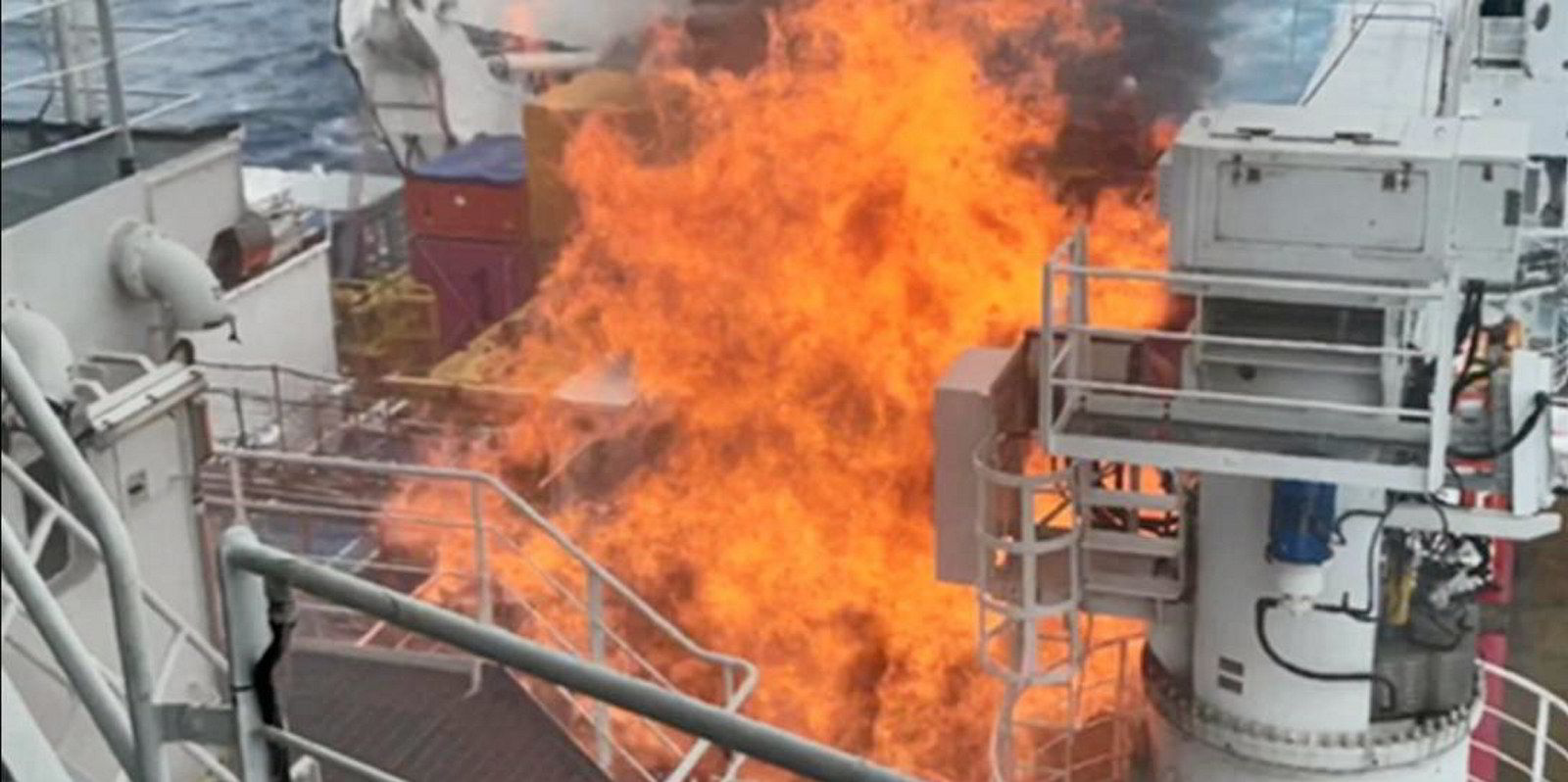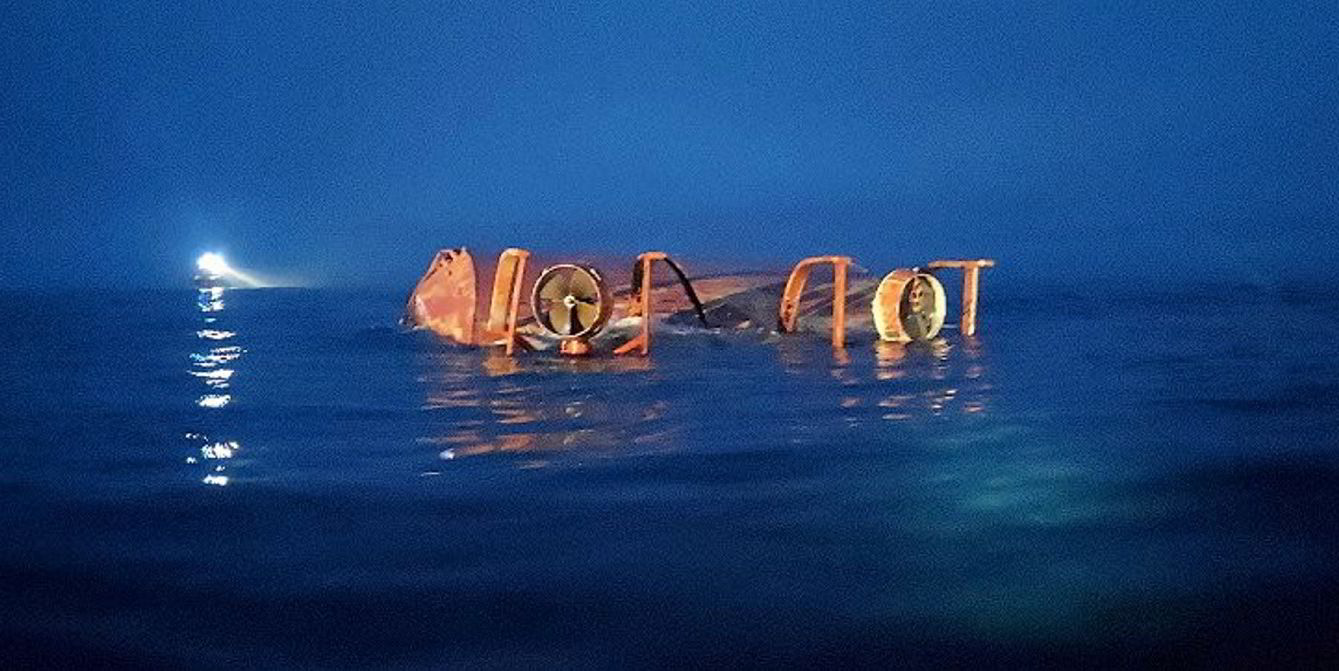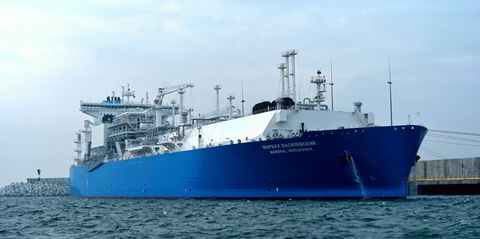An Australian accident report has emphasised the care needed to avoid serious consequences while operating ships in the remote Southern Ocean.
The Australian Transport Safety Bureau (ATSB) said crew fatigue and inappropriate watchkeeping practices contributed to an engine room blaze on the 145-loa dive support vessel MPV Everest (built 2017) on 5 April 2021.
The multipurpose ship, owned by Maritime Construction Services of Luxembourg, was chartered by the Australian Antarctic Division (AAD).
ATSB said the vessel was en route from Antarctica to Hobart with 37 crew and 72 AAD staff when the fire broke out in the port engine room.
The blaze was contained and eventually extinguished using the water mist fixed fire-extinguishing system after about two-and-a-half hours. No injuries or pollution were reported.
But most of the port engine room’s power generation and machinery was substantially damaged, leaving the $150m ship with just two of its six diesel generators operational.
“Although MPV Everest berthed safely in Fremantle eight days after the fire, it required multiple stops at sea for ongoing repairs, and for an extended portion of its voyage, the nearest assistance was many days away,” ATSB chief commissioner Angus Mitchell said.
Other factors contributing to the incident were technical faults, the characteristics of the ship’s integrated automation system, and the design of the vessel itself, the report reveals.
These all contributed to fuel oil overflowing into the engine room.
“The ignition of this overflowing fuel oil, either as a result of contact with a hot surface or an electrostatic discharge, resulted in the fire,” ATSB said.
Investigators found that classification society Bureau Veritas had approved the ship’s fuel oil settling tank’s air vent pipe being positioned within the engine room’s exhaust ventilation casing.
Safe discharge needed
“While this air pipe was not designed for the egress of fuel, this incident demonstrated that it was a possibility, and international regulations specified that air pipes for fuel oil tanks must discharge to a safe position on the open deck,” Mitchell said.
“However, Bureau Veritas’ design approval processes had not identified any potential risks with the positioning of this air pipe in MPV Everest’s engine room ventilation casing and, consequently, had approved the design, which contributed to the overflowing fuel entering the engine room,” he said.
ATSB also found other safety issues that were found to have increased the level of risk in the accident, although they did not contribute directly.
Manager’s lack of preparation
Mitchell said ship manager Fox Offshore “had not ensured the ship was adequately manned, equipped or prepared for the hazards and challenges of operations in the Southern Ocean and Antarctica”.
He added that the ship’s safety management system was neither sufficiently mature for its operations, nor had it been effectively implemented on board.
Fox has been contacted for comment.
AAD told ATSB that an independent review of its procurement process and vessel operating procedures had led to several areas of improvement.
“In the event of an abandonment, factors such as distance, weather, and availability of suitable search and rescue assets would have made any potential rescue of MPV Everest’s complement extremely challenging, with a successful outcome far from assured,” Mitchell said.
“The risks and challenges of operating in the harsh, remote conditions of the Southern Ocean and Antarctica are most effectively mitigated by ensuring that ships that venture into these waters are operated at the highest levels of preparedness in terms of crewing numbers, expertise, equipment availability and readiness, and emergency response.”





